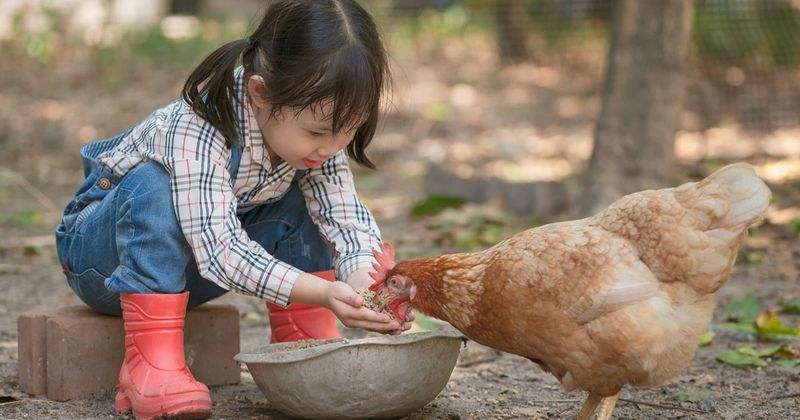Rural lifestyles, poultry exposure provide protection against asthma in children
Children from the rural Conghua region of China had lower rates of asthma and atopic disorders than children from urban Hong Kong, indicating a protective effect from an agricultural lifestyle, according to a study published in Allergy.
These findings could lead to primary preventive strategies for asthma, which affects millions of people worldwide, Yuhan Xing, post-doctoral fellow in the department of pediatrics at The Chinese University of Hong Kong Faculty of Medicine, and colleagues wrote.

The community-based, cross-sectional epidemiological study involved 14,118 children from Conghua (mean age, 6.6 ± 1.1 years; 53.5% boys) and 3,145 children from Hong Kong (mean age, 6.5 ± 0.7 years; 52.6% boys), all aged 5 to 8 years. Parents completed written asthma and environmental questionnaires.
In the previous 12 months, 7.7% of the urban children and 1.7% of the rural children experienced wheezing episodes (OR = 4.86; P < .001). Also, 3.4% of the urban children and 0.5% of the rural children experienced sleep-disturbing wheeze (OR = 7.1; P < .001).
Compared with the rural children, the urban children additionally experienced higher rates of exercise-induced wheeze (10.5% vs. 6.9%), symptoms of rhino-conjunctivitis (22.2% vs. 2.7%), flexural eczema (8.4% vs. 4.3%) and asthma medication use (14.8% vs. 1.7%) in the previous 12 months (all, P < .001).
The urban children also had higher rates of lifetime diagnosis of asthma (5.3% vs. 2.5%), history of wheeze (16.9% vs. 5.8%), allergic rhinitis (39.9% vs. 8.7%), eczema (28.7% vs. 21.7%) and ever use of asthma medication (25.5% vs. 4%) compared with the rural children (all, P < .001).
With 7,132 (50.5%) of the rural children hailing from families that conducted farming activities, the researchers further found significant differences in lifetime prevalence of asthma and related symptoms between those who had ever lived on a farm and those who had not.
For example, fewer children who had vs. had never lived on a farm had been diagnosed with asthma (2.1% vs. 3.1%; OR = 0.67; P < .001). Children who had lived on a farm also were less likely to have used asthma medication (3.7% vs. 4.6%; OR = 0.81; P = .01) and were less likely to have allergic rhinitis (OR = 0.59; P < .001) compared with those who had not lived on a farm.
Compared with children who had never been exposed to a farm, even rural children who were only exposed to farms by visiting their neighbors had significantly lower lifelong prevalence of allergic rhinitis (10% vs. 12.8%; OR = 0.75; P < .001) and asthma medication use (4% vs. 5.2%; OR = 0.77; P = .03).
A multivariate model established agricultural farming (adjusted OR = 0.74; 95% CI, 0.56-0.97) and poultry exposure (aOR = 0.75; 95% CI, 0.59-0.96) as protective factors for asthma. Agricultural farming, particularly poultry exposure, had a similar protective effect on allergic rhinitis as well.
The use of a foam pillow (aOR = 2.12; 95% CI, 1.14-3.93) and indoor dampness (aOR = 1.58; 95% CI, 1.27-1.98) presented the highest asthma risks among the rural children. Synthetic fiber bedding, use of parasite medication and carpet flooring also were risk factors for physician-diagnosed asthma in this population.
According to the researchers, these farmers typically keep small numbers of poultry, primarily chicken, for consumption and not for commercial purposes. At night, these animals are brought inside, potentially bringing diverse microbes into the home.
In fact, 68.1% of the rural children had contact with poultry. The researchers, then, called for further studies to determine the biological mechanisms behind the protection that poultry exposure seems to confer with a goal of developing preventive strategies against asthma.
